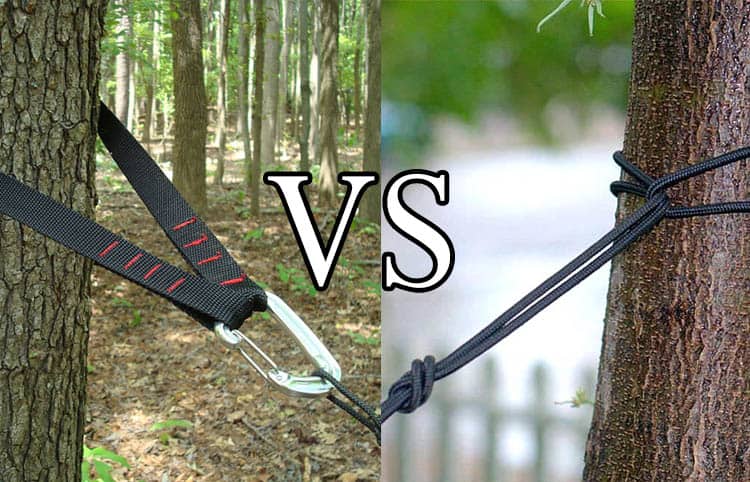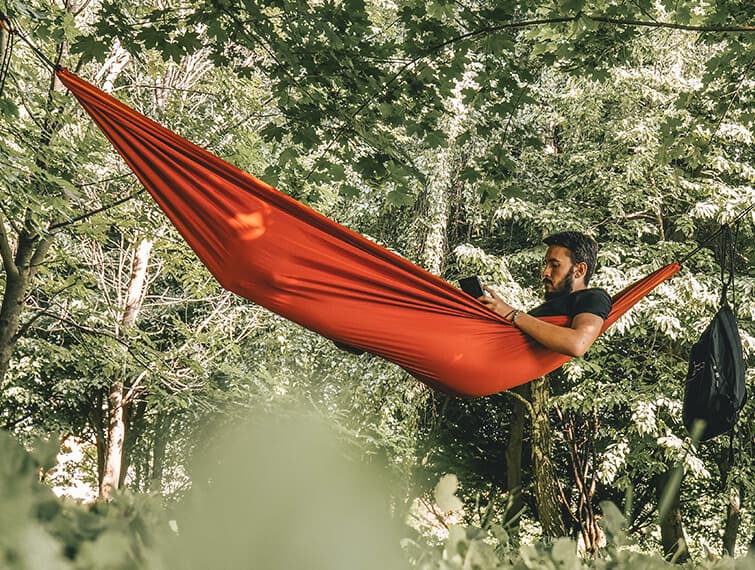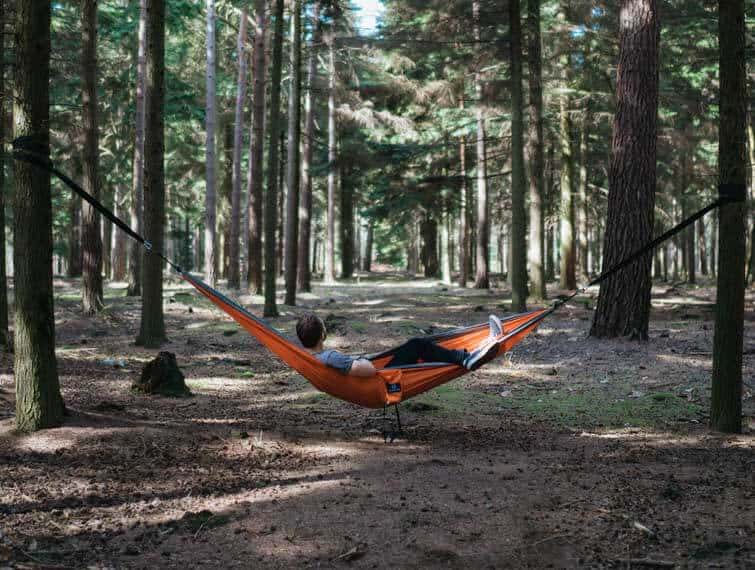When it comes to hanging hammocks, it’s been always a debate about whether to use raw ropes or tree straps. Well, it actually depends on your preferences or needs. If you’re used to hanging hammocks with ropes, you can do so and if you like tree straps, you may use it as well. However, you have to remember that both have pros and cons. So, make sure to be aware of those things to avoid any inconvenience.

How to Use Hammock Straps
Hammocks are a great way to relax in your backyard or on vacation, but if the hammock isn’t taut, it can sag in the middle and become uncomfortable. Hammock straps are an easy way to keep your hammock tight without having to use rope or chains, which can be difficult to tie correctly.
Most hammock straps are made from durable webbing and have metal carabiners on each end for easy attachment. So how to use hammock straps?

What Are Hammock Straps?
Hammock straps are a great alternative to hang hammocks from trees. Tree straps prevent possible damage that result from installing hooks into your tree and enable you to move hammocks easily. Before you install tree straps, you have to find 2 trees that are with proper distance. If you’re not sure which distance is good for your hammock, you can check a chart about hanging distance.
If you know which of the trees from you’re going to hang hammocks, wrap every strap around the first tree. When it’s already wrapped around the tree, place a ring through its end with a loop in the strap as well as pull until it’s snug. You should also wrap the strap around trees once more. Repeat the procedure for the second tree and once done, it’s time for you to relax.
Different Ways You Can Use Hammock Straps
There are many different ways you can use hammock straps. You can use them to hang a hammock between two trees, to hang a hammock indoors, or to attach a hammock to a stand.
Fun Outdoor Quiz
If you are using straps to hang a hammock between two trees, make sure the trees are far enough apart that the straps will be taut. Otherwise, your hammock will sag in the middle. You can also use two sets of straps if the trees are far apart.
If you are using straps to hang a hammock indoors, make sure you have adequate ceiling clearance. You may also need to use anchors or screws to secure the straps to the ceiling.
If you are using straps to attach a hammock to a stand, make sure the stand is sturdy and can support the weight of the hammock and its occupants.
Tips for Using Hammock Straps
If you are looking for ways to improve your hammock camping experience, then using hammock straps is a great way to do that. Straps can help to make setup and takedown easier, as well as keep your hammock in place. Here are a few tips for using your hammock straps:
- Make sure the straps are the correct length. This will ensure that your hammock hangs at the correct height and is stable.
- Make sure the straps are tightened properly. This will help to keep your hammock in place and prevent it from sagging.
- Anchor the straps properly. This will keep the hammock from swinging around and keep you safe while you sleep.
- Experiment with different strap configurations to find what works best for you. There is no one perfect way to use straps, so experimentation is key!
Why Do I Need Tree Straps for Hammock
The popularity of hammocks is on the rise, and for good reason. They are a great way to relax and enjoy the outdoors. However, if you don’t use tree straps, you could be doing serious damage to the trees you’re using.
Hammocks can weigh anywhere from 20 to 30 pounds, and that weight is distributed across the straps when you’re using them. With no protection, that kind of pressure can cause serious damage to a tree. Tree straps spread the weight of the hammock over a wider area, which prevents any damage from occurring.
In addition to protecting the trees, tree straps also make it easier to set up your hammock. They keep the hammock in place so it doesn’t move around while you’re trying to get comfortable.
Raw Ropes
Ropes are made from the natural fibers, which are typically light brown. It can be also made from synthetic fibers like polypropylene or nylon. The nylon ropes stretch like rubber bands when under the strain up to 40% of its length depending on the imposed weight. This only means that even though your hammock is tightly pulled, it’ll sag as the user’s weight stretches the rope.
On contrary, natural fibers swell whenever it’s wet. The reason behind it is that natural fiber ropes absorb water, which results to swelling. Swollen fibers would cause ropes to tighten up by about ten percent. It just means that once you use natural fiber ropes, hammocks are stretched a bit during an inclement weather.
What Kind of Rope Is Used for Hammocks?
There are many options to choose from when it comes to rope, but the most common type is polyester. Polyester provides a range of benefits including being lightweight, soft, durable, and having UV protection. This makes it perfect for use in hammocks because it will last longer than other types of rope and can withstand exposure to the elements.

Which is Better Between Raw Ropes and Tree Straps for Hammock?
If you’re looking to get the most out of your hammock, it’s important to ensure that you have the right ropes or straps. Raw ropes and tree straps both offer their own set of pros and cons, but there are a few factors to consider before deciding which one is best for you: weight, usability, and durability.
First, raw ropes tend to be lighter and easier to use than tree straps. However, they can also wear down quickly if not used properly. Tree straps on the other hand are more durable because they don’t stretch as much when in use. They also come in different sizes so you’ll need to make sure you choose the correct size for your needs. If you’re looking for something lightweight and easy to carry around with you, then raw rope may be just what you want. But if you plan on using them often, then tree straps will likely work better for you.
Do Hammocks Damage Trees?
For a quick nap, a hammock might be the perfect place to relax. However, most hammocks are tied to trees and have been seen damaging trees. The most damage is seen when the two ends of a hammock pull on one side of a tree, causing an unnatural strain on the tree trunk which can lead to cracking and splintering along with uneven growth. In some cases, this can result in an entire branch being torn from the tree.
Look For Tree Friendly Straps
If you’re looking for a hammock without the weight and hassle of a bulky stand that’s not going to damage the trees, then look no further than the Tree Friendly Hammock Straps.
Last update on 2024-04-18 / Affiliate links / Images from Amazon Product Advertising API
Alternatives to Hammock
There are many hammocks that are available for purchase, but there are also many alternatives that people can try out. One way to change up your hammocking experience is by sleeping under the stars with a tarp tent under the stars. Another option is to use an outdoor hanging chair or swing which both give you an aerial view of your surroundings.
Conclusion
In conclusion, there are many ways to secure a hammock. The two most popular methods are using tree straps or using raw rope. Tree straps are the most popular because they are easy to use and can be reused for future trips.











